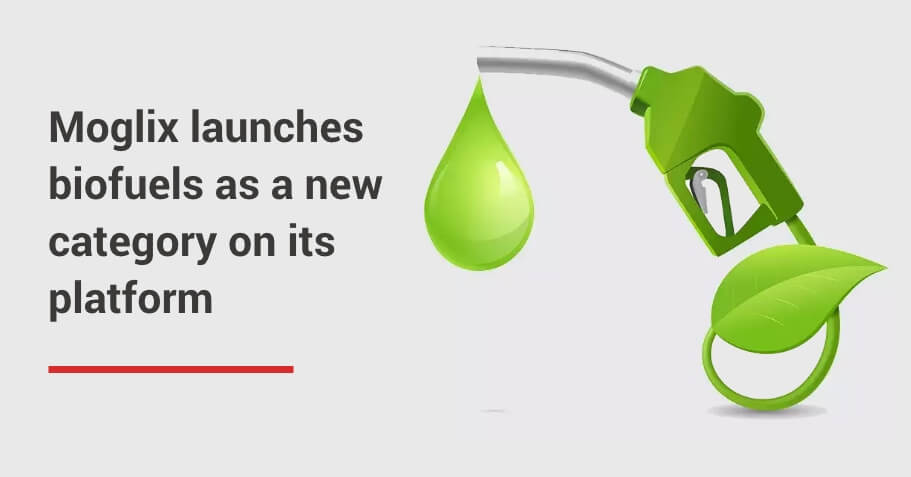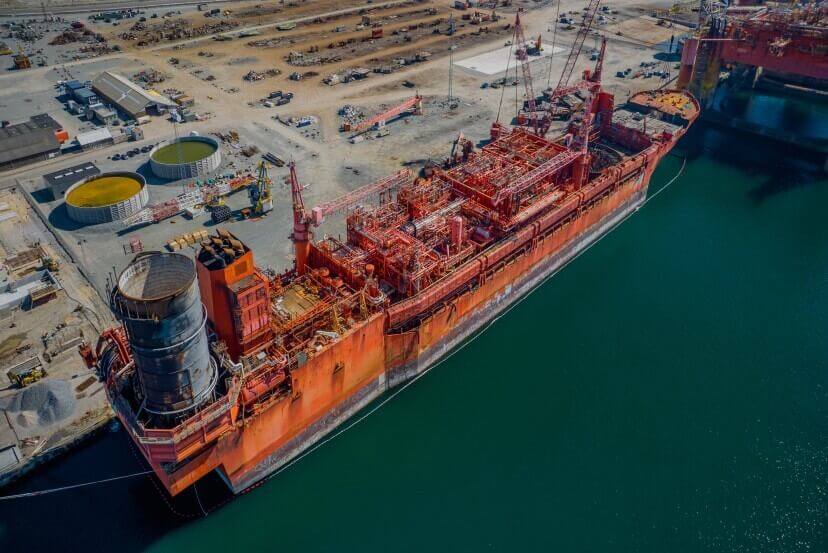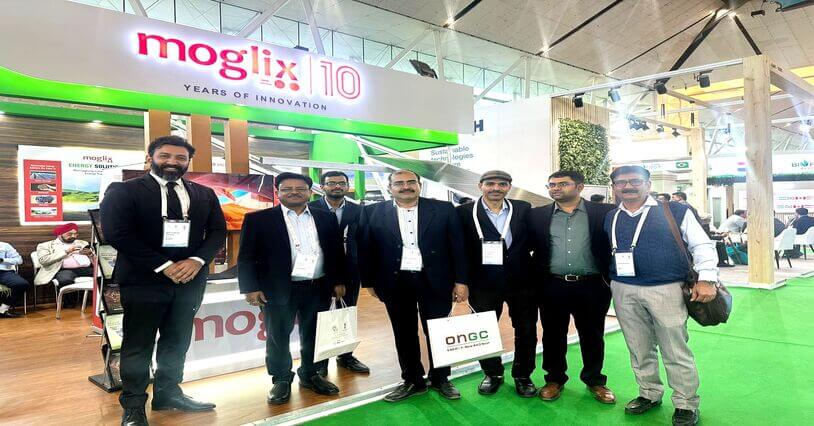National Supply Chain Conference

National Supply Chain Conference
Date: 6th March’2025
Organizer: CII
About the event: Mr. Bharat Gakhar, Director at Moglix, shared key insights at the CII (Confederation of Indian Industry) National Conference on Responsive Supply Chain for Indian Manufacturing on how innovation and resilience will drive the next era of supply chains. Moglix remains committed to fostering a dynamic and future-ready ecosystem, accelerating India’s journey towards Viksit Bharat @2047. A big thank you to all the industry leaders and experts who contributed to this impactful discussion!
Digital Twins in Supply Chain Management: Real-Time Insights and Predictive Maintenance

Digital Twins in Supply Chain Management: Real-Time Insights and Predictive Maintenance
Imagine a digital copy of yourself– a doppelganger, an identical twin in every way. This digital twin can handle all your digital tasks at home and in the workplace, seamlessly managing everything from complex calculations to daunting tasks that you might otherwise avoid.
Even better: This twin is impervious to pain, injury, or embarrassment, working tirelessly without any limitations, unlike the human body. Sounds mind-boggling, right?
Now, shift this concept to the world of supply chains, where digital twins aren’t just a concept but a powerful reality. For businesses, certainty is extremely important and the digital twin helps them achieve it. By replicating the supply chain process, digital twins are enabling companies to optimize performance, reduce risks, and drive innovation in ways that were once unimaginable.
Therefore, this concept is emerging as a game-changer for enterprises revolutionizing their supply chain operations.
In this blog, we’ll explore the evolving world of digital twins in supply chain management, their role in providing real-time insights, and their applications in predictive maintenance and inventory management. So, let’s begin.
What are Digital Twins and How Do They Work?
Digital Twins are virtual replicas/representations of real-world entities such as systems, persons, objects, or processes. They are designed to digitally represent, understand, and portray the structure of these physical entities accurately. These digital representations are made using data gathered from sensors and other devices embedded in the physical entity and synchronize with their historical and real-time data. These replicas can be of a jet engine, a building, a process, a big city, or even a field.
The concept of digital twins originated in manufacturing but has since expanded to various domains, including health care, urban planning, and supply chain management. They integrate techs like IoT (Internet of Things) sensors, AI (Artificial Intelligence), Cloud Computing, Simulation, Visualization, and Advanced Analytics.
A digital twin continuously collects information from the physical objects it replicates. This information includes everything from operational parameters like temperature and pressure to environmental conditions and usage patterns. By integrating IoT, AI, ML, and advanced analytics into the gathered data, professionals can create a digital model of the physical object.
Understanding Digital Twins in the Supply Chain
Digital twins in the supply chain are digital models that replicate the characteristics, behavior, and workings of the physical supply chain processes. They display everything involved in the supply chain management process, including machines, warehouses, manufacturers, distribution centers, transportation routes, and more.
The purpose of these twins is to get a comprehensive and real-time view of the entire supply chain. This enables businesses to monitor, analyze, and optimize their supply chain operations more effectively.
By creating a digital twin, companies can simulate situations, predict outcomes, and optimize performance without risking the actual supply chain. Furthermore, these twins help supply chain managers detect issues, improve efficiency, and enhance decision-making.
The Role of Digital Twins in Supply Chain Management
Digital twins play a transformative role in supply chain management by offering real-time visibility, enabling predictive analytics, and improving decision-making. Here we’ll discuss some pivotal roles of digital twins in the supply chain process.
1. Live Monitoring
Digital twins use sensors to provide a continuous, real-time view of the supply chain operations. This live information enables managers to monitor current performance and respond quickly with an action.
2. Demand Forecasting
By interpreting and analyzing real-time and historical supply chain data, digital twins can forecast demands. This helps businesses optimize their inventory levels and reduce the risks of overstocking or stockout.
3. Supply Chain Optimization
Digital twins can study various factors, such as transportation routes and warehouse efficiency to identify areas for improvement and suggest ways to optimize them, leading to cost savings and enhanced productivity.
For example, DHL has built a digital twin of its warehouse in Asia for Tetra Pak (a food packaging enterprise) to collect real-time information from its physical warehouse. As a result, its team can track the performance and look for alternate storage solutions.
4. Risk Management
Another critical role of digital twins is simulating potential disruptions, like supplier delays or transportation bottlenecks. This early risk detection allows companies to develop contingency plans and mitigate risks promptly.
5. Predictive Maintenance
Digital twins can predict potential failures by simulating the behavior of equipment and machinery. This allows supply chain managers to prepare for proactive maintenance and reduce downtime.
6. Collaboration and Transparency
Digital twins enhance communication and improve collaboration across the supply chain. This occurs by providing a shared and accurate view of operations to all stakeholders, resulting in a transparent approach.
7. Sustainability Initiatives
By optimizing processes, limiting energy consumption, and reducing waste, digital twins contribute to a more sustainable supply chain. This practice empowers companies to meet environmental goals and global standards.
Microsoft is leveraging digital twin technology. It has successfully incorporated carbon emission data into its core metric and reduced carbon emissions by 40% while gaining profitability.
Applications of Digital Twins in Predictive Maintenance
Predictive maintenance is a proactive approach that focuses on early detection of failures or disruptions. Digital twins play a crucial role in this process by providing a virtual representation of physical entities, allowing businesses to monitor and analyze their condition in real time. Following are some ways digital twins enhance predictive maintenance:
1. Real-time Tracking- Digital twins continuously track and collect data from sensors implanted in the types of equipment. This real-time data automatically feeds into the digital model, which reflects the physical entity’s condition and performance.
2. Anomaly Detection- Digital twins can identify anomalies and indicate errors or issues by comparing real-time data with historical performance.
For instance, a minute increase in vibration might signal a misalignment or error in machinery. This detection will allow maintenance teams to address the problem before it leads to a massive failure.
3. Predictive Analytics- Using advanced analytics and ML, twins analyze gathered data to predict the likelihood of a component failing. This predictive capability enables businesses to timely schedule maintenance, minimize disruptions, and extend the lifespan of components.
4. Remote Maintenance- In some situations, digital twins offer remote maintenance, where the technical team can diagnose or fix issues without being physically present.
5. Scenario Simulation- Digital twins can simulate “what-if” scenarios to understand how different strategies might impact operations’ performance and cost.
For example, they can estimate the impact of delaying maintenance, enabling managers to make informed data-driven decisions that balance cost with reliability.
Inventory Management Using Digital Twins
Inventory management is critical to supply chain operations, involving monitoring, tracking, controlling, and optimizing inventory status. Digital Twins offers cutting-edge supply chain management solutions for enhancing inventory management by providing a real-time view of inventory across the entire supply chain.
1. Inventory Visibility and Transparency- Digital twins provide a clear and transparent view of inventory across the supply chain, accessible to all the stakeholders. This enhanced visibility ensures that everyone from procurement to sales teams has access to the same accurate data. It facilitates better decision-making and collaboration.
2. Optimized Supply Chain- Twins can simulate different supply chain scenarios, such as lead times and transportation disruptions. By analyzing these scenarios, businesses can find the optimal inventory stages and locations to minimize costs. This will help balance inventory across the supply chain, reduce overhead costs, and improve operational efficiency.
3. Automated Replenishment- Based on real-time data and predictive analytics, digital twins can automate the replenishment process. When inventory levels reach a predefined threshold, digital twins automate orders to suppliers, ensuring continuous product availability while minimizing surplus stocks.
4. Improved Customer Service- With precise inventory management, businesses can ensure product availability and timely delivery, ultimately enhancing customer satisfaction. Additionally, digital twins enable order fulfillment without any errors, leading to improved customer service.
The Bottom Line
Adopting digital twin technology in the supply chain brings a myriad of benefits. Businesses can leverage these virtual replicas to improve their supply chain efficiency, streamline operations, and bring transparency to the system. Enterprises can use them to foster innovation and gain a competitive edge in today’s business environment.
To utilize the full potential of this emerging technology, companies should work with skilled professionals. Partner with Moglix a trusted B2B Commerce firm that offers end-to-end supply chain solutions. We have years of experience in delivering top-notch services to clients.
Explore how Moglix can help optimize your supply chain with cutting-edge procurement solutions and data-driven insights. With our expertise in supply chain management and advanced digital tools, we help businesses enhance efficiency, reduce risks, and achieve sustainable growth.
Procurement’s Role in Achieving Net Zero Goals

Procurement’s Role in Achieving Net Zero Goals
Due to increasing greenhouse gas emissions, the world is witnessing the challenge of climate change. The carbon emissions blanket the Earth, trapping the Sun’s heat, leading to global warming and changes in climatic conditions.
According to the UN Climate Action, businesses are the biggest contributors to climate change. They account for 75% of global greenhouse gas emissions and about 90% of carbon dioxide emissions.
Companies heavily rely on burning fossil fuels—coal, oil, and gas—to extract raw materials, manufacture, and transport goods. As a result, gases like carbon dioxide, methane, nitrous oxide, and CFCs pollute the atmosphere.
As more companies acknowledge their responsibility to reduce carbon emissions, procurement teams are increasingly pressured to implement strategies that mitigate the impact of climate change. Hence, procurement teams are finding ways to implement sustainable measures and set net zero goals.
In this blog, we’ll explore net zero goals in detail, why they are important, and discuss the role of procurement strategies in achieving the company’s net zero goals. After the end of the blog, you’ll be equipped with strategies to help combat climate change and attain net zero emissions.
What are net zero goals?
Net zero goals refer to a state in which greenhouse gases emitted by a company are balanced by those removed from the atmosphere, with a net zero impact on the environment.
It is an internationally agreed-upon goal implemented by enterprises worldwide to reduce global warming and gas emissions. The goals are carried out to reduce the amount of carbon emissions in every way possible through sustainable practices.
According to the United Nations Climate Action Organization, net zero refers to reducing carbon emissions to a level that allows nature to completely absorb and store them without disturbing the balance of the atmosphere.
For businesses, setting net zero goals is not just about meeting regulatory requirements; it’s also about aligning with global efforts to combat climate change. It’s about fostering sustainable growth and minimizing your environmental impact, ensuring long-term success in an evolving global market.
Why net zero is important?
Net zero is not just a corporate responsibility, it’s a crucial step in safeguarding the future of our planet. It is vital for businesses as it helps in navigating climate change, gain a competitive edge, and stay sustainable in the long run.
In the current scenario, many consumers are inclined to support businesses prioritizing sustainability and net zero goals. Consumers have become more conscious of products and the company’s environmental impact.
A Statista study revealed that 44% of consumers today are more likely to purchase products from brands committed to sustainability.
Moreover, governments are increasingly implementing regulations to compel companies to control their emissions. By setting and achieving net zero goals, companies can mitigate regulatory risks, meet consumer expectations, and position themselves as leaders in the transitioning low-carbon economy. Aside from cleaning the environment, net zero helps businesses grow, save costs, and increase resilience.
How do procurement strategies contribute to achieving net zero goals?
We realize it’s the need of the hour, but can procurement really achieve net zero? Several believe that net zero is an unachievable target and is doomed to fail. Amidst the challenges, there’s a need to be hopeful.
Procurement strategies come to the rescue for achieving net zero goals because they directly impact businesses’ supply chains. Below are some procurement strategies that can drive sustainability and achieve net zero objectives.
1. Sourcing Sustainable Materials
Prioritize sourcing materials with a lower environmental impact, focusing on renewable, recyclable, and low-carbon options to reduce the carbon footprint in your manufacturing processes.
For example, at Moglix, we procure materials that align with renewable energy sources such as solar panels, biomass briquettes, and green hydrogen. Through this initiative, we directly contribute to reducing the carbon footprint in manufacturing.
Additionally, we use these materials to replace fossil-fuel-dependent alternatives, helping achieve net zero emissions while supporting the use of eco-friendly raw materials.
2. Partnering with Eco-Friendly Suppliers
Choosing suppliers who align with sustainability standards and share net zero commitment can contribute to more sustainable growth. Eco-friendly suppliers adopt energy-efficient processes, actively minimize waste, and implement practices that significantly reduce carbon emissions.
Long-term partnerships with such suppliers foster collaboration and lead to innovation and reduced environmental impact. Additionally, these strengthened relationships can help ensure a more resilient and responsible supply chain. By leveraging this procurement strategy, companies can adapt to evolving global environmental standards and meet consumer expectations.
For example, we continuously work with suppliers to ensure they adopt energy-efficient processes and minimize waste generation. These collaborations encourage the development of innovative, green technologies that contribute to achieving net zero emissions.
3. Implementing Green Procurement Policies
Implementing green procurement policies not only minimizes environmental impact but also leads to significant cost savings by optimizing resource use and reducing waste, making your operations more efficient. Implementing these policies into business operations facilitates sustainability in the procurement process. These policies require procurement teams to consider environmental criteria, one of the ESG (Environmental, Social, Governance) criteria, while making purchasing decisions.
The E criteria might include evaluating the carbon footprint of the material, assessing the supplier’s sustainable approaches, and emphasizing purchases that align with the company’s net zero goals. These policies ensure consistency in sustainable practices and foster an environmental responsibility in the organization.
At Moglix, we integrate green procurement policies that emphasize the use of low-carbon alternatives. These policies are reflected in our procurement framework, which incorporates circular economy principles and prioritizes recycled and sustainable materials
4. Promoting Low-Carbon Economy Practices
Procurement strategies can support the low-carbon economy by prioritizing materials with low carbon emissions. By using reused, recycled, and repurposed materials, teams can lower the overall carbon footprint of the process. For instance, companies might choose easy recycling materials over materials taking longer to decompose in the environment.
5. Encouraging Supplier Innovation
Procurement professionals can encourage suppliers to innovate sustainable resources that fulfill net zero goals. Incorporating sustainable criteria while selecting suppliers will ensure that they align with the company’s values and net zero goals. The selected suppliers can contribute to more sustainable products and processes.
The innovation involves investing in renewable energy, adopting more efficient manufacturing practices, or reducing the carbon footprint of logistic operations. When suppliers are motivated to innovate, the entire supply chain becomes sustainable, contributing to overall sustainable growth.
For example, our push towards biomass-based energy solutions and waste-to-energy technologies enables suppliers to align with our net zero vision .
6. Reducing Waste in the Procurement Process
Minimizing waste in itself is the biggest contributor to achieving net zero goals. It can be accomplished by reducing packaging waste, optimizing orders to avoid overproduction, and minimizing returns.
For instance, companies can collaborate with suppliers to develop eco-friendly packaging solutions like ours or adopt just-in-time procurement strategies to reduce overstocking, ultimately cutting down waste and emissions.
At Moglix, we’re our logistic operations by promoting fuel-efficient and hybrid vehicles to reduce carbon emissions from transportation. We also use biomass-based energy solutions and waste-to-energy technologies to promote our net zero vision.
7. Supporting Local Sourcing
Another effective strategy for reducing greenhouse gas emissions is sourcing goods locally. By sourcing materials and services locally, companies can reduce carbon emissions caused by transportation.
This approach will drive the growth of local economies and reduce the risks of supply chain disruptions. Often, local products are costly, but the environmental benefits and reduced carbon footprint can outweigh the extra cost when considering long-term sustainability goals.
8. Leveraging Technology
By integrating advanced tools and technologies in procurement, businesses can track and verify the sustainability of suppliers and their materials. Tools like blockchain, AI-driven analytics, and ML enable teams to monitor their products’ environmental impact in real time. These techs identify inefficiencies, optimize resource usage, and ensure that suppliers meet sustainable standards, making procurement a key driver of net zero goals.
9. Educating and Training Employees
Educating and training employees and suppliers on sustainable practices can help businesses achieve net zero goals. By organizing workshops, seminars, and training sessions, procurement teams can educate employees about the importance of sustainability and eco-friendly practices.
Educated and well-informed suppliers and teams are prone to make informed decisions that align with the company’s sustainability objectives. This results in a consistent and impactful approach to achieving net zero goals.
10. Empowering Stakeholders to Reduce Carbon Footprint
Another crucial strategy is empowering stakeholders to reduce their carbon footprint in every way possible. This can be attained by equipping them with tools, resources, and incentives to implement sustainable practices.
For example, procurement teams can partner with suppliers to develop sustainable products or offer incentives to stakeholders who suggest ways to reduce carbon emissions. By empowering stakeholders with something extra, businesses can drive innovation for net zero and create a sustainable business ecosystem.
Summing Up
As businesses encounter increasing pressure to address climate change, procurement’s role in achieving net zero goals is now more critical than ever. By adopting these strategies, companies can not only protect the environment but also secure their future in a competitive, low-carbon economy. Additionally, Businesses that reduce greenhouse gas emissions across the entire supply chain can lower their environmental impact and strengthen their position in the market as carbon-neutral players.
How can Moglix help your business achieve net zero emissions?
At Moglix, we strongly believe in innovating solutions and proactive measures to pave the way for a greener, emission-free, and more resilient future for businesses. Our solutions align with global sustainable standards, fostering a positive impact on society and the environment. With experts and professionals by our side, we can help your business reduce its carbon footprint and reach net zero.
Moglix launches biofuels as a new category on its platform

Moglix launches biofuels as a new category on its platform
Moglix has introduced biofuels as a new category on its platform. This expansion aligns with the company’s commitment to sustainability and India’s transition to cleaner energy. By adding biofuels, Moglix aims to help industries reduce their carbon footprint and adopt more eco-friendly alternatives in their operations. The platform now offers a wide range of biofuel products to meet the growing demand for sustainable energy solutions. This addition strengthens Moglix’s role in advancing India’s green energy goals.
Read MoreThe Impact of Geopolitical Risks on Global Supply Chains and Procurement Strategies

The Impact of Geopolitical Risks on Global Supply Chains and Procurement Strategies
The World Economic Forum’s survey report in 2023 revealed that more than half of respondents (54%) anticipated instability and risks of global crises in 2024, with geopolitical events driving at the front seat.
The events including trade wars, political events (elections), regional conflicts, etc are quite the concerns. These growing threats are directly or indirectly impacting businesses’ supply chains leading to delays, disruptions, increased costs, and material shortages. To navigate these complexities, businesses should stay informed about geopolitical risks and develop strong procurement strategies to mitigate them and maintain supply chain resilience.
Today, we’ll explore geopolitical risks and their impact on the global supply chain of businesses. Additionally, we’ll share the current geopolitical crises of 2024 and their effect on businesses operating globally and also suggest some strategies to mitigate these risks and ensure business continuity in an increasingly evolving world.
So, let’s get started!
What are Geopolitical Events & Uncertainties?
Simply put, Geopolitical events and uncertainties are unpredictable risks arising from disruption caused by uneven political or diplomatic relations between nations. These risks can take any form, including political instability, military conflicts, international wars, terrorist threats, economic crises, geographical events, and climate risks.
These risks can directly or indirectly affect the global economy and businesses. The direct impacts are surging prices, increased uncertainties, financial transaction issues, capital control, and higher transportation risk. The indirect effects include disrupted trade flow, shortage of resources, higher inflation, and risks in the supply chain. Typically, geopolitical risk occurs when a major conflict, a shift in power, or a national crisis happens from a nation’s involvement in international matters.
For example, U.S. elections will have a significant impact on all the global economies. The U.S. is one the most powerful nations and with its elections comes several uncertainties and potential risks as new powers and agendas might overtake.
These risks equally impact both the nation itself and the global community around the world. Unlike other types of risks, geopolitical risks are quite difficult to predict and come as an unexpected shock and they might escalate or create massive challenges for businesses.
Currently, globalization has become a major contributor to fueling these risks as businesses across the globe are increasingly interconnecting different economies by exchanging goods and services. Now, the major focus of businesses operating worldwide is to understand how these risks are affecting their supply chain system. And come up with new procurement strategies to help build resilience, adapt to modern marketing challenges, and prepare for unforeseen risks.
How do Geopolitical Risks Affect the Global Supply Chain?
Geopolitical risks are indeed a game-changer for businesses; they can disrupt a business’s healthy supply chain in a fraction of the time. As companies increasingly shift to the international level to source materials, manufacture products, and distribute goods, the impact of geopolitical events has become more critical. Below is an analysis of how these risks can affect the supply chain:
1. Disruption of the supply chain
In various situations, geopolitical risks can disrupt the complete supply chain system. For instance, a war outbreak can put manufacturing plants, transportation systems, and communication mediums on hold. Such disruption can cause a global level of supply shortage and a halt of production, resulting in significant financial losses.
2. Delay in delivery
When geopolitical tensions, such as trade wars, labor strikes, or regional conflicts emerge, it can lead to delayed delivery times. In case of political instability in regions with manufacturing and shipping setups, transportation routes may be disrupted and ports might be closed. These kinds of situations can lead to delays in the delivery, affecting scheduled deliveries, and unfulfilled customer demands.
3. Increased transportation cost
The emergence of a geopolitical crisis can lead to a rise in transportation costs. For example, situations like the imposition of tariffs, rerouting transportation to avoid conflict zones, or increasing security measures can inflate the cost of transportation moving goods across borders. Additionally, finding alternative routes or transportation to avoid risky regions might drive up expenditure, overall impacting the supply chain budget and profitability of businesses.
4. Shortage of materials
Geopolitical events can disturb the supply of raw materials, resulting in a shortage of materials. Let’s understand it with an example, there’s conflict in a region rich in essential minerals and due to this, the local government has limited access to these materials. During such conflicts, material shortage can lead to a delay in production, forcing companies to seek resources from other suppliers, which may not stand out in quantity or quality requirements. This can ultimately disrupt the production process.
5. Fluctuation in currency value
Geopolitical instability and events can lead to fluctuations in currency values, creating financial uncertainty. Businesses operating globally can encounter currency unpredictability, affecting the cost of imports and exports, and resulting in uncertain pricing and profit margins. For instance, a sudden devaluation of a supplier’s national currency could reduce costs or might signal economic instability, leading to a reevaluation of business relationships.6.
6. Changes in trade policies
Sudden changes in the trade policy including imposition of tariffs and import/export restrictions can occur during geopolitical tensions. These policy shifts can create barriers for businesses to trade, forcing companies to quickly adapt or face the risk of losing their market. Such unpredictable trade policy changes can make long-term planning difficult for businesses.
7. Shift in supply-demand
Geopolitical risks can impact the balance of supply and demand in the global markets. For instance, a conflict in a major oil-producing region can reduce the supply of oil, driving up its prices, and impacting industries depending on fuel. Similarly, sanctions on a specific country can lower the supply of goods from that nation, while increasing the demand for fuel in other regions. This shift in supply-demand can lead to price hikes and supply chain disruptions.
Some recent geopolitical events impacted the Supply Chain
The rising tension and geopolitical events between countries can impact the global supply chain. Here are two such geopolitical crises from 2024 that might affect several businesses’ supply chains:
The Red Sea Crises

Image source: U.S. Energy Information Administration
Yemen Houthi group has attacked cargo ships in Bab al Mandbeb Strait from the southern side of the Red Sea. This launch has caused many global shipping and oil companies like Maersk and British Petroleum to halt their transportation in that area and suspend shipments.
Hence, ships of these companies are avoiding their route from Europe to Asia, especially Egypt’s Suez Canal. This canal was considered the maritime route connecting Europe and Asia, accounting for 12% of the world’s shipping traffic. This crisis is directly causing shipments to travel longer routes, adding cost to transport, and increasing oil prices.
The U.S.-China Tension
The rising U.S.-China trade tension will continue to impact the global supply chain. The US has imposed export restrictions on China, particularly in the tech sector due to intellectual property concerns. This intensified trade tension between both nations. As a result, the trade of Liquified Natural Gas (LNG) between them is fueling a spark in their relations as China is a major importer of US LNG.
Now in response, China has imposed its own export restrictions on gallium, germanium, and other metals which has caused an increase in commodity prices, further complicating the entire global supply chain economy.
Procurement Strategies to Mitigate Risks in the Supply Chain
Businesses in order to mitigate risks should implement strong procurement strategies, catering to their specific needs. Following are some of the strategies that can help businesses save from impromptu geopolitical crises:
1. Digital supply chain
Digital supply chain helps in predicting geopolitical risks by using tools and tech to analyze data, identify patterns, and predict potential disruptions. These technologies include Artificial Intelligence, the Internet of Things, Predictive Analytics, and Blockchain to monitor supply chain operations, enabling companies to detect and spot potential risks early and manage them in real time.
2. Consider nearshore or reshore strategy
Businesses should consider adopting a nearshore or reshore strategy to mitigate risks associated with long-distance shipping. This ensures reduced risks or disruptions related to long-distance shipping and shortened delivery times.
3. Smart Inventory Management
Adopt a lean inventory management strategy, like just-in-time (JIT) management, to avoid overstocking. Similarly keep stocks of essential items as a backup to protect against shortages.
4. Work with multiple suppliers
Instead of relying on just one supplier for importing materials or commodities, work with multiple suppliers. It will help businesses reduce risks of geopolitical instability and ensure backup options.
5. Build Strong Supplier Relationships
Invest in long-term relationships with the suppliers. This will improve their ability to manage risks, deliver on time, and boost their overall performance and reliability.
In a Nutshell
Geopolitical risks and events have the potential to impact the supply chain operations of businesses globally. To reduce the impact of these risks, businesses should follow comprehensive approaches and strategies. The strategies enable them to identify potential disruptions, mitigate the risks, build durability, and align with global market changes.
Apart from integrating mitigation strategies, companies can boost their supply chain operations by leveraging modern tools and techs. Additionally, by developing emergency backup plans, enterprises can facilitate long-term relationships.
Is your Supply Chain ready to mitigate the Geopolitical Risks?
If not, Moglix can help you mitigate disruptions and ensure business continuity. Our Supply Chain Risk Management Solutions understand the crucial importance of managing supply chain risks for the seamless operations of your business. Our solutions can empower you to identify, assess, and navigate potential risks, ensuring continuity and durability worldwide.
Sustainable Procurement: Integrating ESG Criteria into Supplier Selection

Sustainable Procurement: Integrating ESG Criteria into Supplier Selection
This powerful statement was made a decade ago, yet remains as true for businesses today as it did then. With the world witnessing climate change, economic crises, and social inequalities, the urgency of adopting sustainable practices has never been more relevant. A sustainable business doesn’t just benefit the planet, people, and profit; it also plays a crucial role in addressing these global challenges.
Amidst these challenges, sustainable procurement has emerged as both a corporate responsibility and a strategic necessity. It’s not just about meeting businesses’ rising concerns and demands but also about contributing to a safer, more environmentally friendly future.
Sustainable procurement incorporates Environmental, Social, and Governance (ESG) principles into the procurement, purchasing, and supplier selection process. It should deliver value for money while minimizing its environmental, social, and economic impact.
According to one study conducted by Maseno University, Kenya states that selecting suppliers based on sustainable (ESG) criteria can increase procurement performance by a staggering 76.4%. This statistic highlights the significant advantages that businesses can gain by adopting sustainable procurement practices.
Going beyond the traditional focus on price and quality, sustainable procurement aims to reduce negative environmental impacts, support social growth, and facilitate ethical governance practices throughout the supply chain.
Today, what businesses are facing is massive pressure from investors, consumers, and regular bodies to act responsibly and ensure sustainability in the long run. So, to suppress this pressure, we’ll delve into the benefits of sustainable procurement, explore the role of ESG criteria in supplier selection, and provide practical steps for integrating these ESG factors to build sustainable supply chains.
Benefits of Sustainable Procurement
As per McKinsey’s research, ESG criteria can lower business costs by 5-10%, focusing on waste reduction and operational efficiency. Sustainable procurement offers multiple benefits that impact businesses’ social, environmental, and governance state. A few benefits are listed below:
- It reduces supply chain risk by ensuring suppliers adhere to standard ESG practices.
- Lowers the operational cost by implementing energy-efficient processes, leading to long-term savings.
- Incorporating sustainable, transparent, and ethical practices enables businesses to strengthen their reputation and gain a competitive edge.
- It ensures that businesses remain compliant with industry standards and regulations.
- It facilitates stronger and more collaborative relationships with the suppliers.
Role of ESG Criteria in Sustainable Procurement
ESG in procurement implies that procurement teams must look beyond cost and quality by considering environmental and social criteria in the purchasing processes and decisions. An ESG-based approach can enable businesses to meet their financial and sustainability goals. Let’s understand the ESG criteria and their role in gaining sustainability in procurement.
- Environmental Criteria- The Environmental criteria deal with challenges like carbon emissions and footprint, climate change, deforestation, and pollution. ESG in sustainable procurement helps businesses reduce environmental impact, carbon footprint, and energy consumption.
- Social Criteria- The Social aspect focuses on health and safety, diversity, human rights, equality, and community impact. ESG-oriented sustainable procurement may require an upfront investment, but it leads to massive long-term savings. It also improves supplier relations and builds collaborative and sustainable relationships.
- Governance Criteria- The Governance criteria deal with internal business practices, procedures, and controls, including auditing and accounting, corruption, and bribery. ESG in sustainable procurement helps businesses comply with diverse regulations and safety standards and sell directly or indirectly to local government organizations.
Following these criteria can help businesses assess their sustainability efforts and impact. Furthermore, it aligns business functions with global sustainability and promotes long-term stability and success.
At Moglix, we’re actively integrating ESG principles into our procurement solutions, especially in the areas of green energy and custom fabrication. We’re driving the adoption of sustainable energy sources for businesses, reducing dependency on fossil fuels, and aligning with net-zero goals by promoting biomass briquettes and solar energy as sustainable fuel alternatives.
How ESG Criteria Help in Supplier Selection
- The Environmental criteria ensure that businesses collaborate or purchase from those suppliers who fulfill all their environmental responsibilities. These responsibilities include efforts to minimize carbon emissions, manage resources and services efficiently, prevent pollution, and contribute to biodiversity. Businesses prioritizing this criteria in procurement decisions and supplier selection are better equipped to reduce pollution, save the environment, and protect the planet.
- The Social criteria will assess a supplier’s impact on people and communities. It includes determining labor practices, human rights adherence, community engagement, and his efforts to promote diversity. This means selecting suppliers who treat their employees well and contribute to the health & well-being of local communities. By integrating this criterion into procurement decisions, businesses can avoid risks associated with unethical practices and improve their brand image as a sustainable organization.
- The Governance factor includes evaluating the supplier’s transparency, accountability, and ethical standards. Businesses should assess how suppliers manage corruption risks, ensure compliance with regulations, and follow ethical business practices. Strong governance in the supply chain ensures that suppliers work with integrity, transparency, and ethics. By choosing suppliers who consider governance frameworks, businesses can keep up with the ethical standards throughout the supply chain.
Here at Moglix, we work with suppliers adhering to sustainable procurement practices by sourcing eco-friendly materials such as biomass briquettes made from agricultural waste. This practice contributes to a circular economy and reduces environmental waste. We ensure that our suppliers follow a Quality Adherence Procedure (QAP) and Quality & Cost-Based Selection (QCBS) framework, aligning with sustainability and ESG goals.
How Businesses can Integrate ESG Criteria to build Sustainable Supply Chain
Today, businesses are rapidly integrating ESG factors into their supply chain to foster sustainability and achieve long-term success. Below are some ways businesses can use to integrate ESG into their supply chain process:
- Choose suppliers prioritizing environmental sustainability by using renewable resources, minimizing resource consumption, and practicing efficient waste management.
- Optimize routes to reduce carbon emissions, decrease fuel consumption, and consider shifting to electric or hybrid vehicles for delivery.
- Consider sourcing raw materials that are renewable, recyclable, and biodegradable. This will help reduce environmental impact and ensure that materials used in the production have minimal harm to nature.
- Businesses should develop a clear and fair code of conduct that outlines ESG expectations from suppliers. This should include regulations to be followed, guidelines on ethical behavior, environmental practices, and social responsibilities.
- Conduct regular audits and assessments of suppliers to ensure they follow ESG criteria. Leverage third-party auditors to cross-check to ensure transparency.
- Integrate tech and tools like blockchain to navigate the origin of materials and monitor the workflow within the supply chain. This will ensure compliance with ESG standards and build trust with consumers and stakeholders by offering transparency.
- Collaborate with suppliers to develop innovative solutions that reduce environmental impact like new production techniques and waste reduction methods.
- Organize training and educational programs for suppliers to help them learn ways to implement ESG practices in their business. Companies like Mars and Unilever are helping suppliers increase resilience to situations like drought and humidity.
- ESG integration is an ongoing process. Therefore, continuously refining and assessing the supply chain practices and adapting to new challenges & opportunities can lead to sustainable outcomes. This will help businesses remain sustainable and align with global ESG trends.
By integrating ESG criteria into the supply chain, businesses can contribute to a more sustainable and environmentally friendly world. This will help enhance their reputation, resilience, and long-term profitability.
For instance, at Moglix, we use cloud-based SaaS systems for managing procurement logistics, order tracking, and supplier performance, ensuring transparency and compliance with ESG standards. Our real-time tracking and digital monitoring tools aid in reducing carbon emissions, optimizing transportation, and enabling the efficient sourcing of sustainable materials.
Conclusion
Integrating ESG criteria into the supply chain has become crucial for businesses to build sustainable, environmentally friendly, and resilient businesses worldwide.
Interesting Fact: Globally, 60% of consumers consider sustainability an essential purchase criterion.
Businesses can accelerate change, drive growth, and gain long-term success by prioritizing environmental sustainability, social responsibility, and robust governance. Selecting suppliers who align with these commitments can help businesses build strong relationships with suppliers and stakeholders.
How can Moglix help you integrate ESG into the Supply Chain?
Our sustainable procurement solutions can help your business improve social and environmental impact. We aim to build a sustainable supply chain through sustainable sourcing, operations, and management. Contact us today. Let’s take your business to sustainable growth.
13th Procurement excellence summit & Awards 2025

13th Procurement excellence summit & Awards 2025
Date: 20th Febuary ‘2025
Organizer: UBS Forums
About the event: Mr. Anshul Khandelwal, Director at Moglix, recently addressed the 13th Edition Procurement Excellence Summit and Awards 2025, organized by UBS Forums Pvt. Ltd.. In the session, ‘Procurement Innovation and Digital Transformation: End to End Visibility in the Procurement Process,’ he highlighted the pivotal role of generative AI in procurement, emphasizing its usage in driving process innovation and efficiency.
3rd MIDDLE EAST PROCURETECH SUMMIT & AWARDS 2025

3rd MIDDLE EAST PROCURETECH SUMMIT & AWARDS 2025
Date: 18th – 19th February
Organizer: Verve Management
About the event: Mr. Piyush Malviya, Vice President & Head – MEA at Moglix, took the stage at the 3rd Annual Middle East Procuretech Summit & Awards 2025 to discuss “Smart Procurement Marketplaces: The Future of B2B Commerce” in Dubai. From digital procurement transformation to AI-driven efficiencies, he shared key insights on how smart marketplaces are reshaping global supply chains and empowering businesses with seamless, data-driven procurement.
Rahul Garg, Founder and CEO of Moglix, recently shared his insights on NDTV Profit about the company’s pivotal role in India’s energy transition

Rahul Garg, Founder and CEO of Moglix, recently shared his insights on NDTV Profit about the company’s pivotal role in India’s energy transition
Rahul Garg, Founder and CEO of Moglix, recently shared his insights on NDTV Profit about the company’s pivotal role in India’s energy transition. He emphasized how Moglix is leveraging technology and innovation to drive sustainability across industrial supply chains. Garg highlighted that the company is committed to providing businesses with cost-effective and eco-friendly solutions, which are essential for decarbonizing logistics and manufacturing. As India moves towards cleaner energy, Moglix is positioning itself at the forefront of this transformation, ensuring industries embrace a sustainable, efficient, and future-ready approach to energy use and industrial operations.
Read MoreIndia Energy Week

India Energy Week
Date: 11th – 14th February
Organizer: DMG Events
About the event: From groundbreaking innovations to inspiring conversations, this week was a powerful reminder of how collaboration and technology are shaping the future of energy. It’s been an honor to be part of this dynamic exchange of ideas and solutions, driving sustainable progress forward.A look back at the best moments from the event—because the journey to a smarter, greener future is just getting started!
